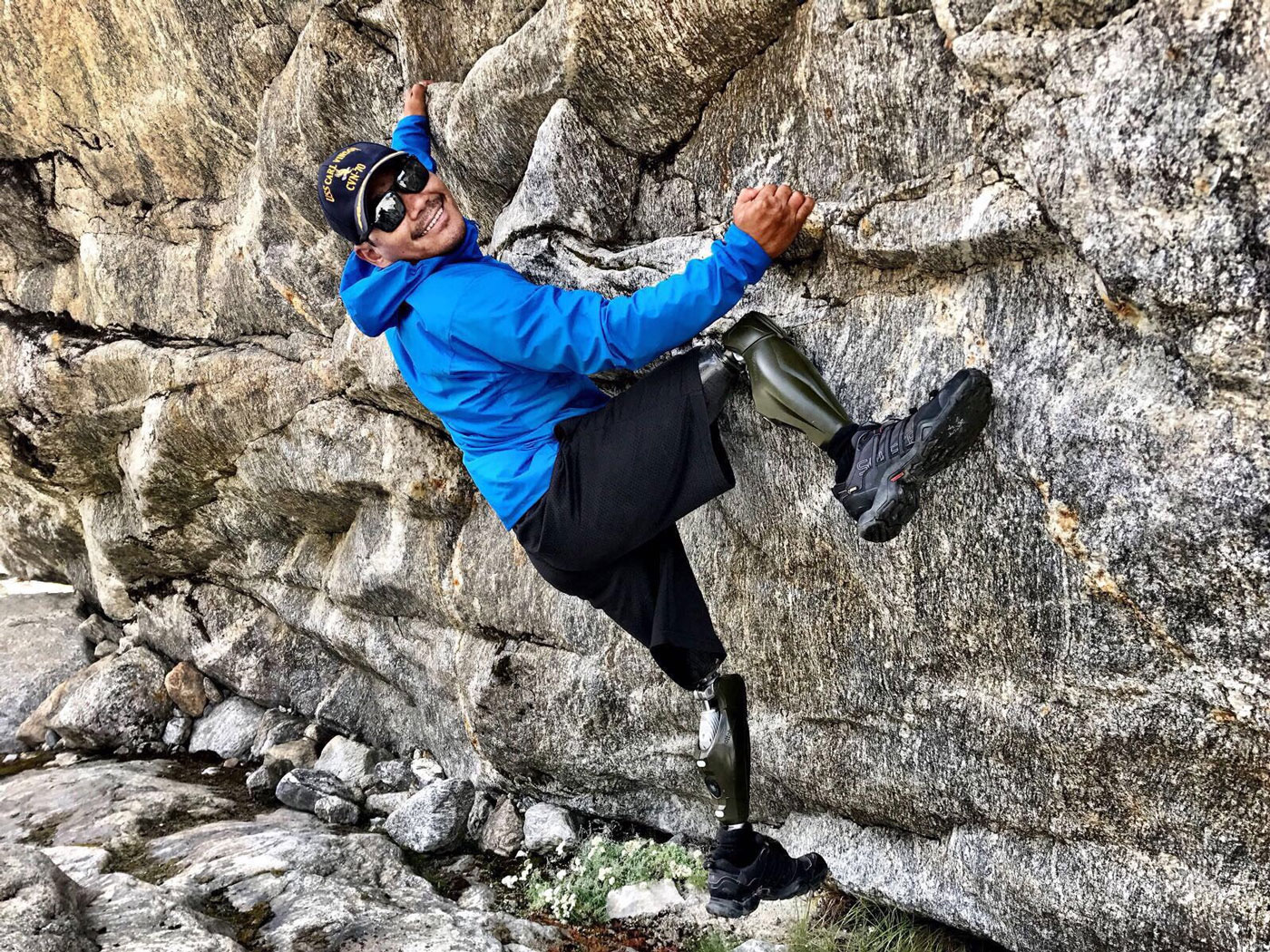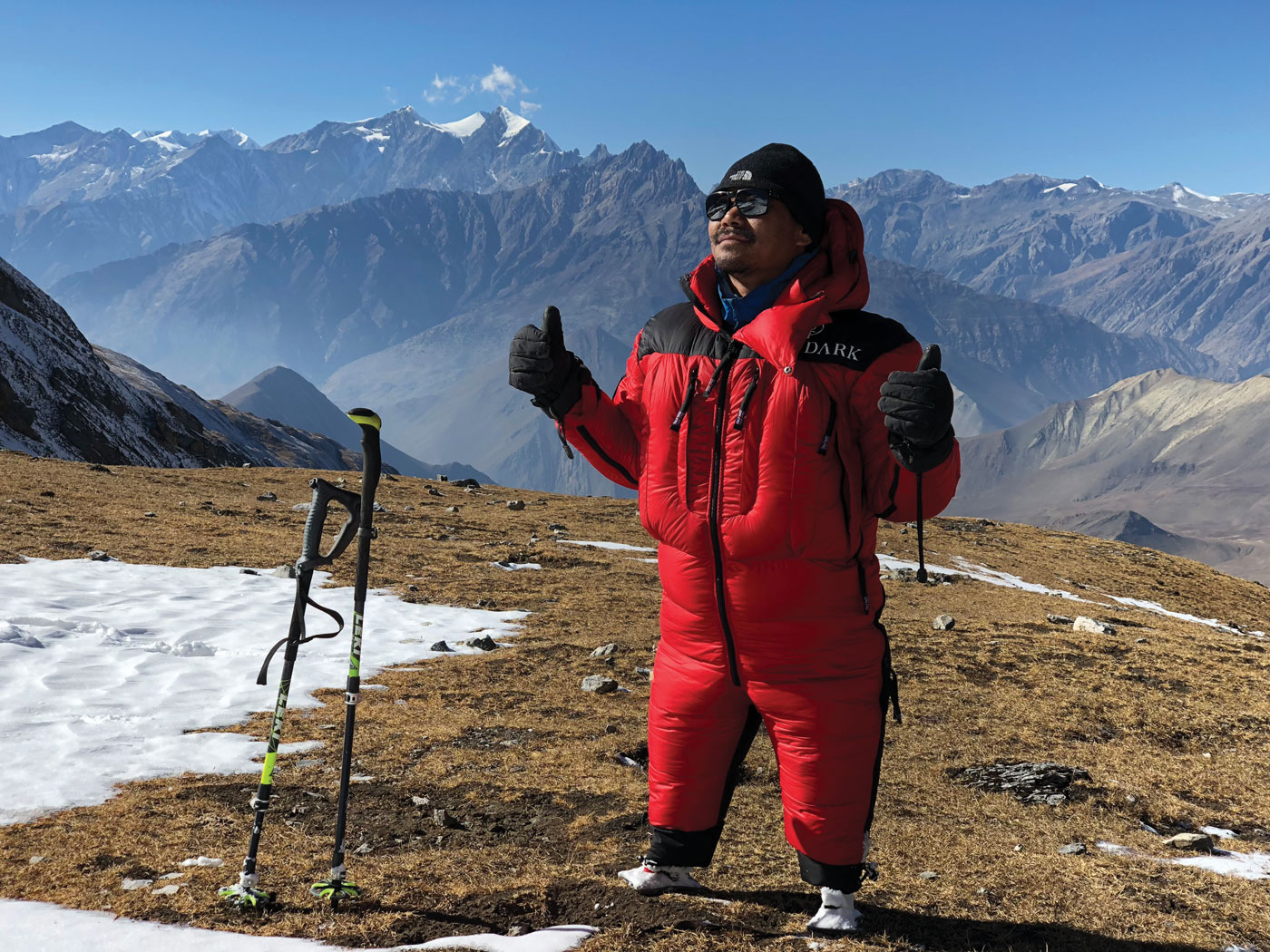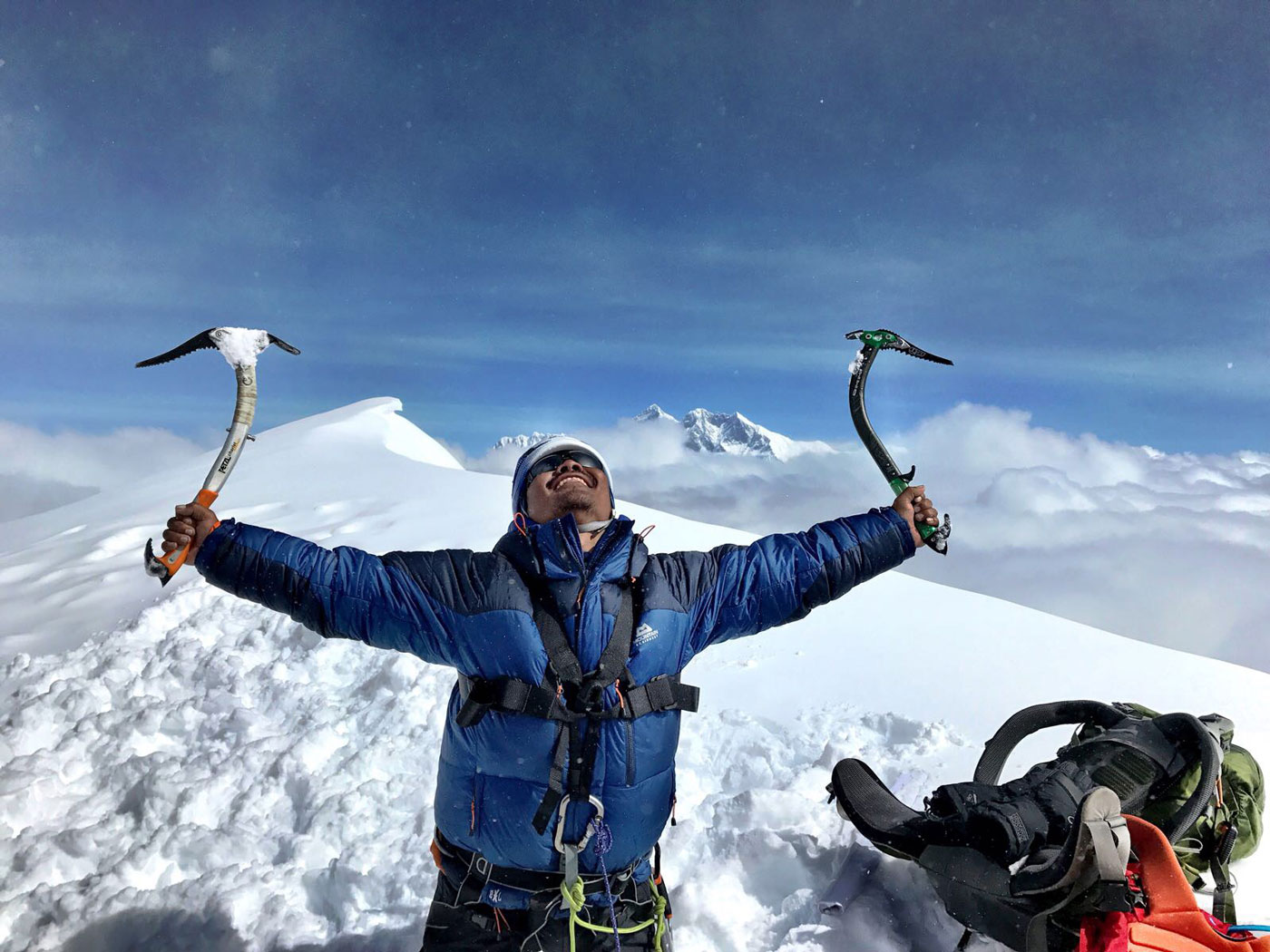Age: 38
Profession: Investor and mountaineer
Location: Canterbury, United Kingdom
You broke world records in September 2017 for being the first bilateral above-the-knee amputee to summit a peak upward of 19,000 feet. You’ve also taken up ice and rock climbing, long-distance kayaking, cycling, and alpine skiing. How did you first get into adventure sports? I was born into a farming family in Mirul, a hillside village in western Nepal. Pushing physical boundaries was just a natural part of growing up in the Himalayas. There were no drivable roads, so every day we would make an arduous 45-minute trek barefoot to primary school. There wasn’t much opportunity for organized sports. We would stuff old clothes into socks and sew it all together to make a soccer ball. Mount Everest was always in partial sight, so climbing the world’s highest peak has been a dream of mine since childhood.
At the age of 19, you enlisted with the Royal Gurkha Riffles and served in the British Army for 15 years, which brought you on tours to North America, Europe, Africa, and Asia. Why did you decide to become a soldier? My father was an army man and always wanted one of his sons to be in the military. Becoming a Gurkha warrior is notoriously difficult. You’re one of 10,000 applicants competing for 120 to 150 seats, depending on that year’s vacancy. Nobody forced us to join—we were all volunteers and really motivated. Training may be grueling, but for the Nepalese, earning a spot is a national honor; it’s like winning a lottery ticket.

You must have had to face acute fear while in combat. What was your headspace like the day you lost both of your legs in Afghanistan? To be honest, I was prepared to die, not to get injured. About 30 of us were walking on the field that day doing routine drills. There were no enemies around, nobody was coming to kill us—it was just a bomb that went off. And bang, within seconds I lost my right leg from the knee down, and my left was badly damaged. I was completely conscious while my friends gave me first aid and called for a helicopter rescue.
Because I was one of the most senior Gurkhas in our 15-person squad, my immediate concern was What are my boys going to do? Then my worries extended to my family: What will happen to them? And finally, What am I going to do now?
Though it may be agonizing and require tremendous resolve, recovery can be transformative. Has yours been? After the explosion, I didn’t know what to do, how to live, or what would come next. When I was medically discharged and finished a military rehabilitation program, the first thing I did was jump out of an airplane from 15,000 feet. Half of my body was gone, and at that point I didn’t care if the other half went too. At the time I didn’t know how valuable the other half was.
I’ve since learned that capability is in my mind, not my legs. I still have a brain to think, hands and limbs to move, a mouth to speak, eyes to see, and ears to hear. I haven’t lost much. We create these limitations in our minds. Sure, I need bigger doors and bathrooms and have to rely on a wheelchair and handrails, but life is about adaptation. When something doesn’t work in the way we expect it to, we find different ways of doing things.

In March 2018, you were a driving force behind taking Nepal’s Ministry of Culture, Tourism and Civil Aviation to the Supreme Court for issuing a set of regulations barring visually impaired and double amputee climbers from attempting to scale Mount Everest. Now that you’ve helped overturn this legal roadblock, what’s next? With all the work I’ve poured into my training and sacrifices I’ve made to nance the expedition, I was disheartened by the December 2017 ban—a move that drew sharp criticism from disability and civil rights organizations worldwide. Discriminating against people on the basis of race, gender, religion, ethnicity, or ability is a violation of human rights, and, as proven in court, runs counter to Nepal’s constitution.
Our leaders are just beginning to rethink the way they measure and police who is fit to climb. And ultimately, as a global community, we need to address issues of accessibility and remove barriers, not build them. Today, disabled people in Nepal are confined to their homes and cannot move around freely. In Kathmandu, our capital city, you’ll be pressed to find a single wheelchair-accessible bathroom. We have to reshape these realities.

In what ways have these battles expanded your motivation and capacity to meet novel challenges with agility? In Buddhism, there are no devils or heroes—it’s all about your perception. As a Gurkha soldier, I have found mental discipline to be easy. As a Buddhist, I work on practicing flexibility of mind.
I am a soldier who has been trained to fight. In the past it was an enemy. Today I fight this injury and to reestablish my mental health. This is what I have always done. And now I’m fighting tirelessly to open up the minds of bureaucrats and government officials. Whichever route we end up taking to climb Everest next spring, I am working to undo people’s misconceptions about what “disabled” bodies can and cannot do. I owe it to my boys and wife, to military veterans and their families, and to my community.
Courtesy Susan Hale Thomas